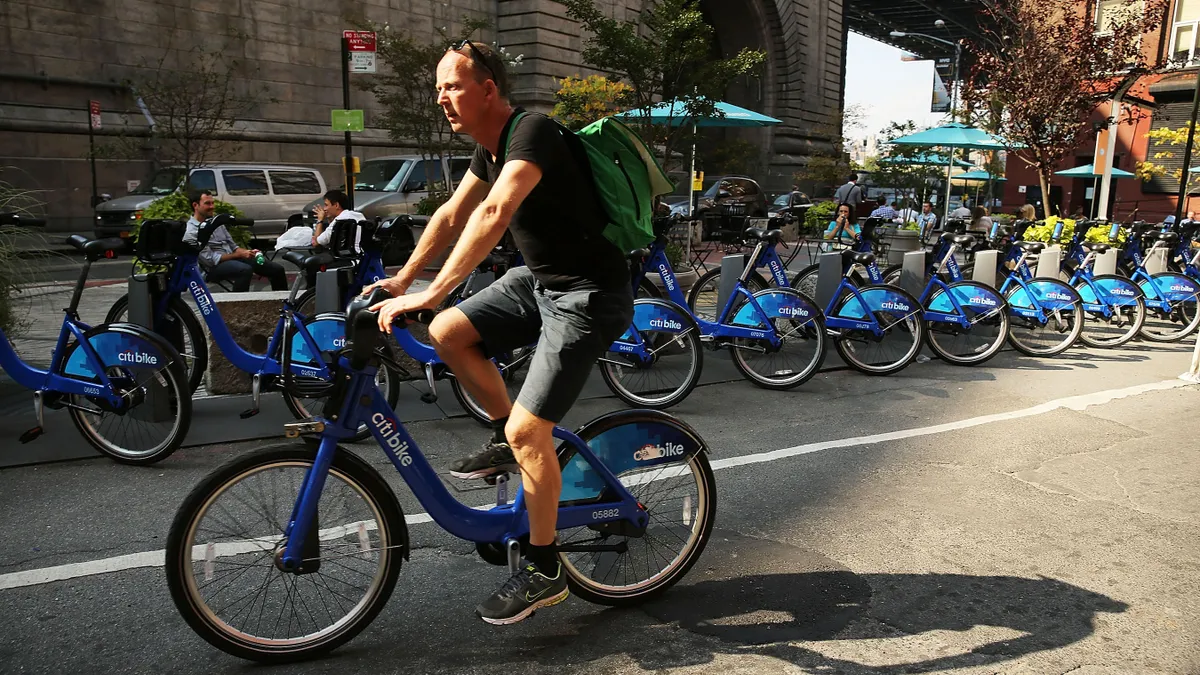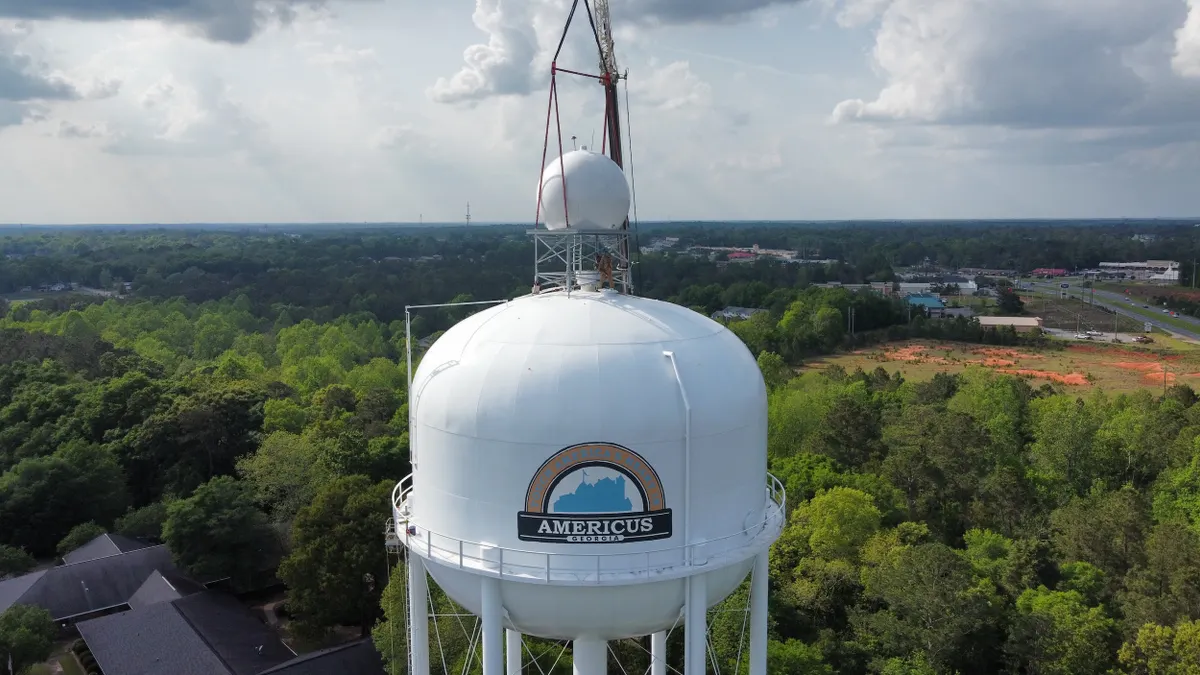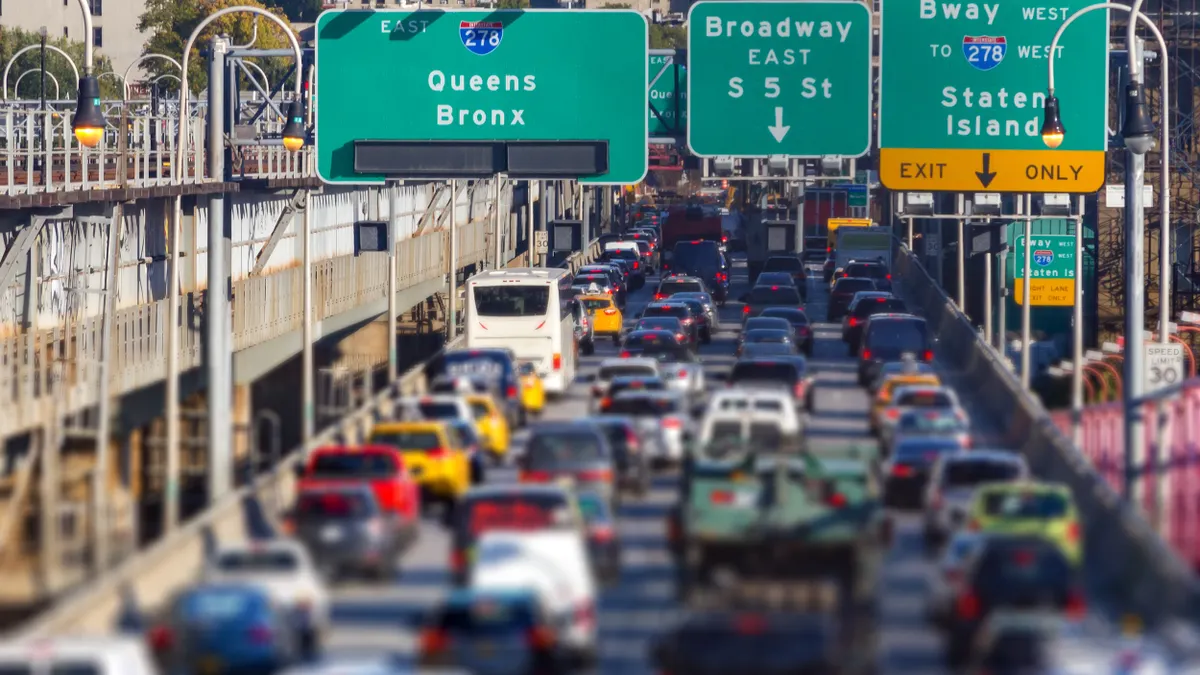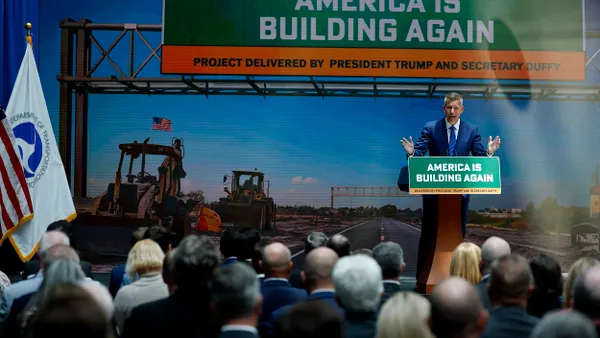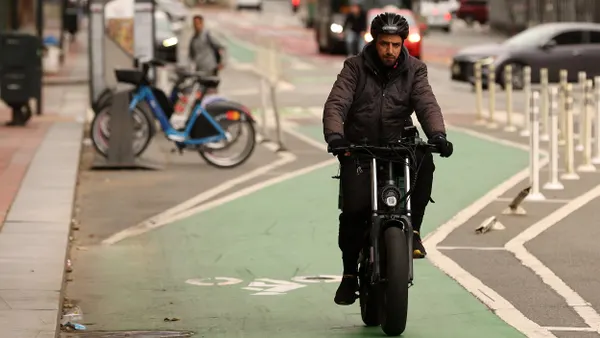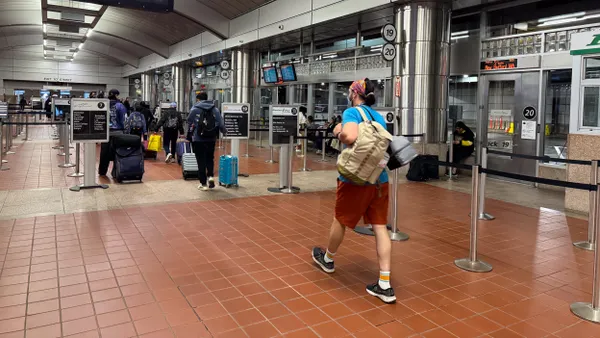Dive Brief:
- More than 1,200 miles of bicycle lanes have been built in 34 global cities since 2021 as part of the Institute for Transportation and Development Policy’s initiative to make cycling a more permanent, reliable and safe mode of transportation in urban areas.
- The campaign began in response to the COVID-19 pandemic which upended commuting and travel patterns in urban areas. It concluded in June.
- The advocacy organization plans to continue work with the World Bank and other partners to help fund bicycle infrastructure projects. ITDP also wants to collect data on the effect of increased cycling on local air quality.
Dive Insight:
The Cycling Cities campaign launched at the 2021 United Nations Climate Change Conference, known as COP26, in Glasgow, Scotland. Participating cities ranged from Addis Ababa, Ethiopia, to Los Angeles, New York City and Mexico City.
“Enabling more people to cycle safely and comfortably in cities is a very practical, cost-effective way to improve public health, enhance air quality, and increase access to opportunities for all,” ITDP CEO Heather Thompson said in a report announcing the campaign’s results.
The campaign aimed to help cities build local capacity to develop bike-friendly infrastructure, provide information and guidance to the 34 cohort cities and shift local trips away from private vehicles.
The accomplishments cited by ITDP include:
- Los Angeles improved safety and comfort for cyclists on Central Avenue in the Watts neighborhood by adding parking-protected cycle lanes, pedestrian crossings, bus-boarding islands and bicycle racks.
- New York City saw an 8% increase in cycling trips annually in recent years, helped by a 17-mile expansion of the Greenways program that included active transport, public space and nature-based corridors that can link with the existing bicycle lane network. Nearly a quarter of city residents live near protected bikeways, the report says.
- Mexico City redesigned its largest street to improve safety and connectivity for cyclists along one of Latin America’s busiest transit corridors.
The ITDP report summarized a number of lessons learned from the four-year campaign. These include starting with a long-term plan that addresses funding and insulates the program from changing political priorities; identifying and working with bike-friendly government leaders; and connecting bicycle lanes with public transit.
On the infrastructure side, ITDP recommends adopting design standards that are safe for all users and reduce potential controversy around proposed bike lanes. In cities with limited access to bicycles, or where theft is common, the report recommends shared-bike programs and secure bike parking.
Going forward, ITDP said it will continue to provide technical assistance to cities in its focus regions and help to ensure that public transit stations include bike-share and bike parking facilities.
“Even as we wind down Cycling Cities as a campaign, this work will continue to have an impact, and there is much more to be done,” Thompson said in the report. “Let this be a call to continued action to all governments, development banks, and philanthropy and civil society organizations to continue elevating comprehensive cycling policies in their agendas.”



